+Search query
-Structure paper
| Title | A new antibiotic traps lipopolysaccharide in its intermembrane transporter. |
|---|---|
| Journal, issue, pages | Nature, Vol. 625, Issue 7995, Page 572-577, Year 2024 |
| Publish date | Jan 3, 2024 |
 Authors Authors | Karanbir S Pahil / Morgan S A Gilman / Vadim Baidin / Thomas Clairfeuille / Patrizio Mattei / Christoph Bieniossek / Fabian Dey / Dieter Muri / Remo Baettig / Michael Lobritz / Kenneth Bradley / Andrew C Kruse / Daniel Kahne /   |
| PubMed Abstract | Gram-negative bacteria are extraordinarily difficult to kill because their cytoplasmic membrane is surrounded by an outer membrane that blocks the entry of most antibiotics. The impenetrable nature ...Gram-negative bacteria are extraordinarily difficult to kill because their cytoplasmic membrane is surrounded by an outer membrane that blocks the entry of most antibiotics. The impenetrable nature of the outer membrane is due to the presence of a large, amphipathic glycolipid called lipopolysaccharide (LPS) in its outer leaflet. Assembly of the outer membrane requires transport of LPS across a protein bridge that spans from the cytoplasmic membrane to the cell surface. Maintaining outer membrane integrity is essential for bacterial cell viability, and its disruption can increase susceptibility to other antibiotics. Thus, inhibitors of the seven lipopolysaccharide transport (Lpt) proteins that form this transenvelope transporter have long been sought. A new class of antibiotics that targets the LPS transport machine in Acinetobacter was recently identified. Here, using structural, biochemical and genetic approaches, we show that these antibiotics trap a substrate-bound conformation of the LPS transporter that stalls this machine. The inhibitors accomplish this by recognizing a composite binding site made up of both the Lpt transporter and its LPS substrate. Collectively, our findings identify an unusual mechanism of lipid transport inhibition, reveal a druggable conformation of the Lpt transporter and provide the foundation for extending this class of antibiotics to other Gram-negative pathogens. |
 External links External links |  Nature / Nature /  PubMed:38172635 / PubMed:38172635 /  PubMed Central PubMed Central |
| Methods | EM (single particle) |
| Resolution | 3.1 - 3.8 Å |
| Structure data | EMDB-29400, PDB-8frl: EMDB-29401, PDB-8frm: EMDB-29402: Acinetobacter baylyi LptB2FG bound to lipopolysaccharide and RG6006 EMDB-29403, PDB-8fro: EMDB-29404, PDB-8frp: EMDB-42206, PDB-8ufg: EMDB-42207, PDB-8ufh: |
| Chemicals |  ChemComp-Y75:  ChemComp-JSG: 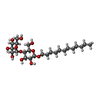 ChemComp-LMT: 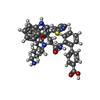 ChemComp-VB6: 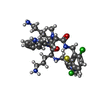 ChemComp-MG3: 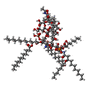 ChemComp-WJR: 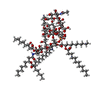 ChemComp-WJW: |
| Source |
|
 Keywords Keywords | LIPID TRANSPORT / lipopolysaccharide / ABC / ATPase / antibiotic / macrocyclic peptide / gram-negative bacteria / ESKAPE |
 Movie
Movie Controller
Controller Structure viewers
Structure viewers About Yorodumi Papers
About Yorodumi Papers








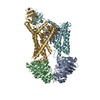

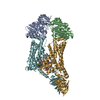



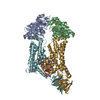


 acinetobacter baylyi adp1 (bacteria)
acinetobacter baylyi adp1 (bacteria)